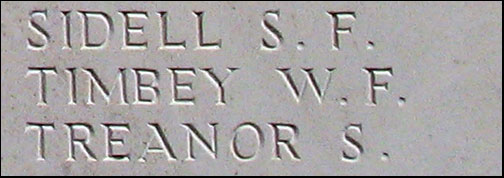![]() In memoriam
In memoriam ![]()
Private William Fairburn Timbey
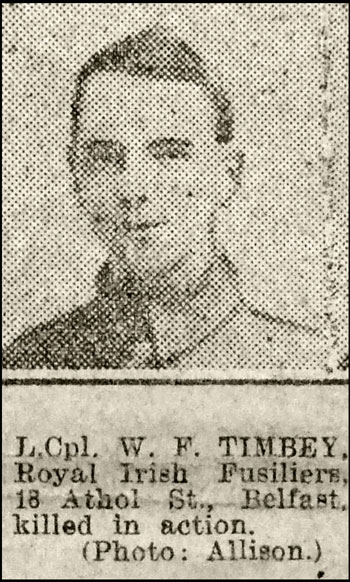
William Fairburn Timbey was born on 5 January 1894 at 34 Elizabeth Street, Belfast, the tenth of eleven children of printer and compositor John Timbey and his wife Eliza Jane (nee Hinds). By 1911 he was living with his family at 18 Athol Street, Belfast, and working as an apprentice plumber.
Timbey enlisted in the North Irish Horse at Antrim between 13 and 19 May 1915 (No.1547). In 1916 or 1917 he embarked for France, where he joined the 1st or 2nd North Irish Horse Regiment in the field.
In September 1917 the 2nd North Irish Horse Regiment was dismounted and most of its men, together with some from the 1st Regiment, were transferred to the 9th (Service) Battalion, Royal Irish Fusiliers – which was then renamed the 9th (North Irish Horse) Battalion. Like most of the men, Timbey was transferred to the battalion on 20 September. He was issued a new regimental number – 41232. He probably saw action with the battalion at the Battle of Cambrai in November and December 1917, and possibly also during the German offensives in March and April 1918.
On 4 September 1918 the 9th Battalion took part in an attack south of Wulverghem on the Ypres front. The battalion war diary for the day recorded the action as follows:
8 a.m. Battle. H.Q. was formed at T.10.d.05.80. and under an artillery barrage the battalion, in conjunction with other battalions on flanks, attacked. Good progress was made. 'D' Coy lost direction and got as far as Stinking Farm (U.7.a). Not being protected on flanks the enemy attempted to cut them off and the Coy had to retire. Our line was established from road (T.6.d.35.80) where touch was made with the 30th Div., along hedge running south through T.6.d.4.0 to river in T.12.b then along breastwork trench from T.12.c.50.35 – T.18.a.80.90, with the gap between 'B' and 'A' Coys. D Coy was put in support along road running south through T.6.c and T.12.a. The enemy were not very numerous but their m.g. fire was heavy. The shelling was fairly heavy but was confined to vicinity of St Quentin Cabaret. During the operation Battle H.Q. was moved to T.5.d.80.40. Six prisoners were made, four of whom were sent through 29th Div. on the right. Some of our men on the right were cut off and are thought to be made prisoners. The 29th Div. took Hill 63 but did not come up far enough to cover our right flank. During the day there was an amount of sniping and m.g. fire and the enemy shelled St Quentin Cabaret and T.12.a with 5.9. In the afternoon he attempted a counter-attack by coming up along railway between 'B' and 'A' Coy. but was driven back by m.g. and rifle fire. At dusk our patrols were pushed forward to get the line behind Bristol Castle but were unable to do so owing to m.g.
The 9th Battalion casualties for the day were four officers wounded, and 17 other ranks killed, 67 wounded and 11 missing. Timbey was one of those killed. As he has no known grave he is commemorated on the Ploegsteert Memorial, Comines-Warneton, Hainaut, Belgium, Memorial Panel 9.
Private Timbey's younger brother Herbert, who also served in the North Irish Horse (No.1823), survived the war.
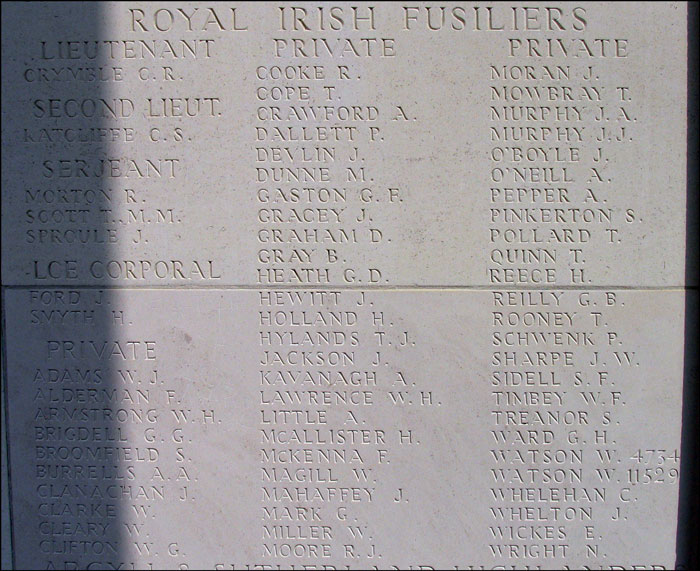
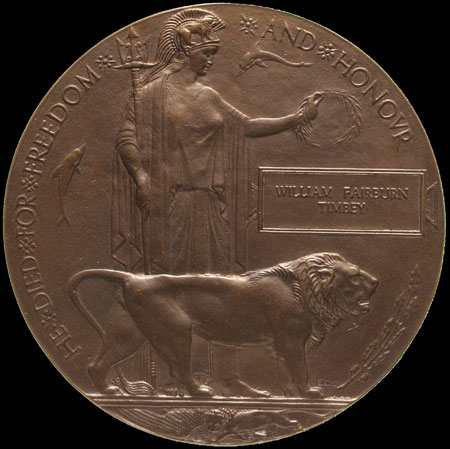
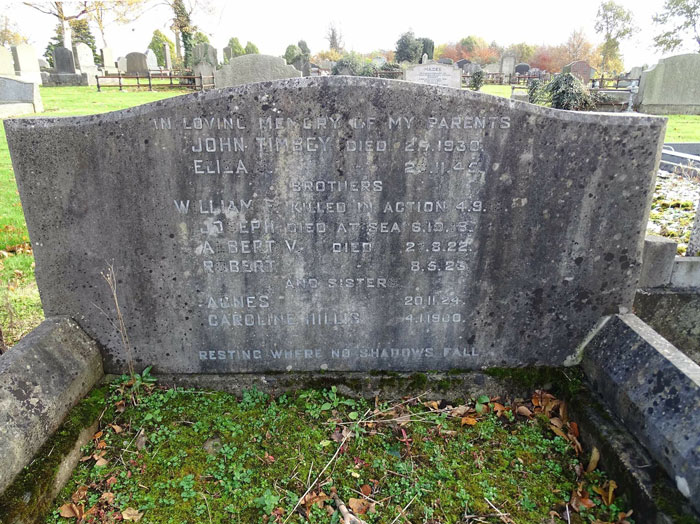
Timbey family memorial, Belfast City Cemetery
Memorial images Copyright © Phillip Tardif with all rights reserved as set out in this Use of Material policy. Newspaper image from the Belfast Evening Telegraph, and family memorial image, kindly provided by Nigel Henderson, Researcher at History Hub Ulster (www.greatwarbelfastclippings.com). Image of Timbey's memorial plaque sourced from the National Museums of Northern Ireland site.

